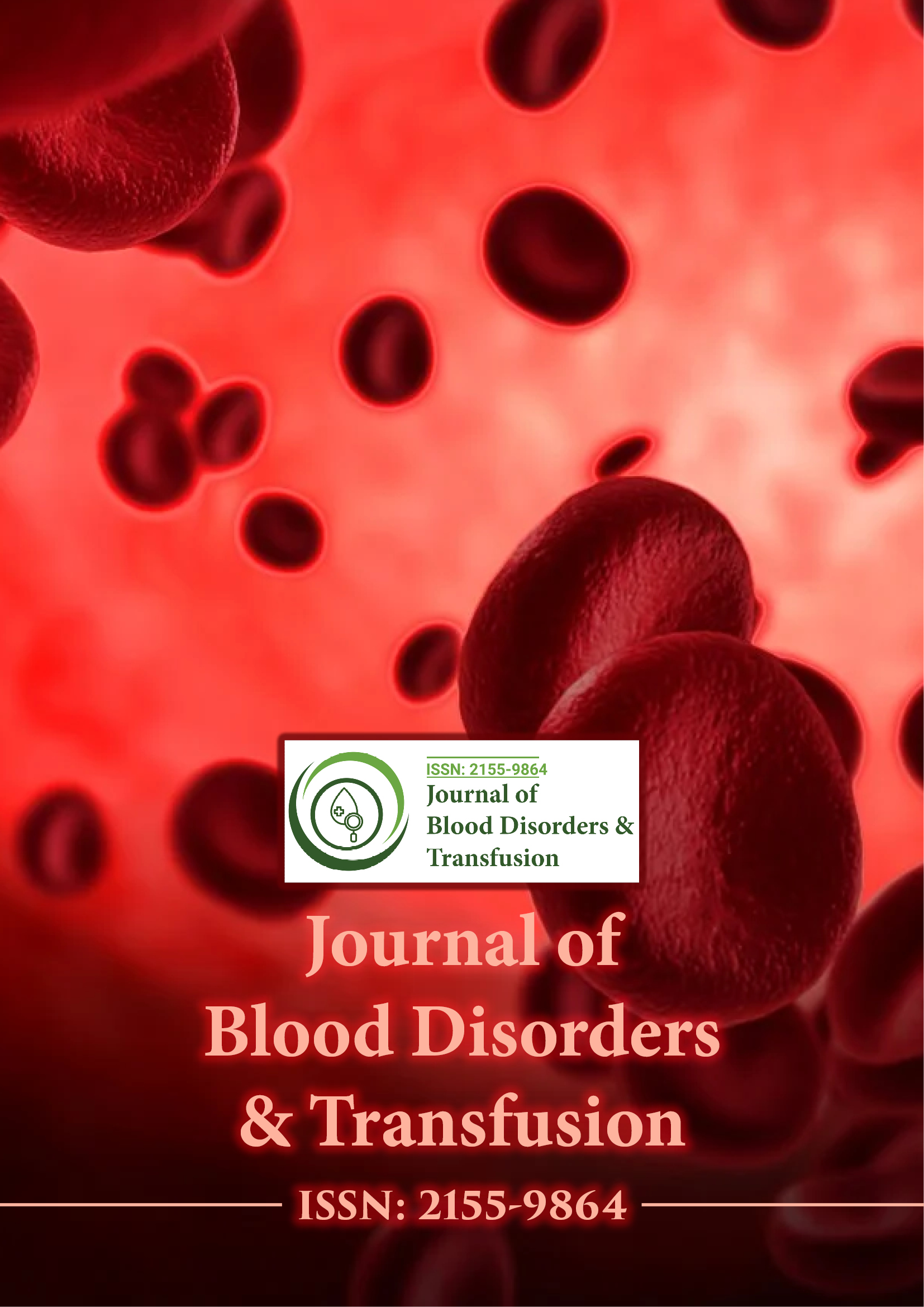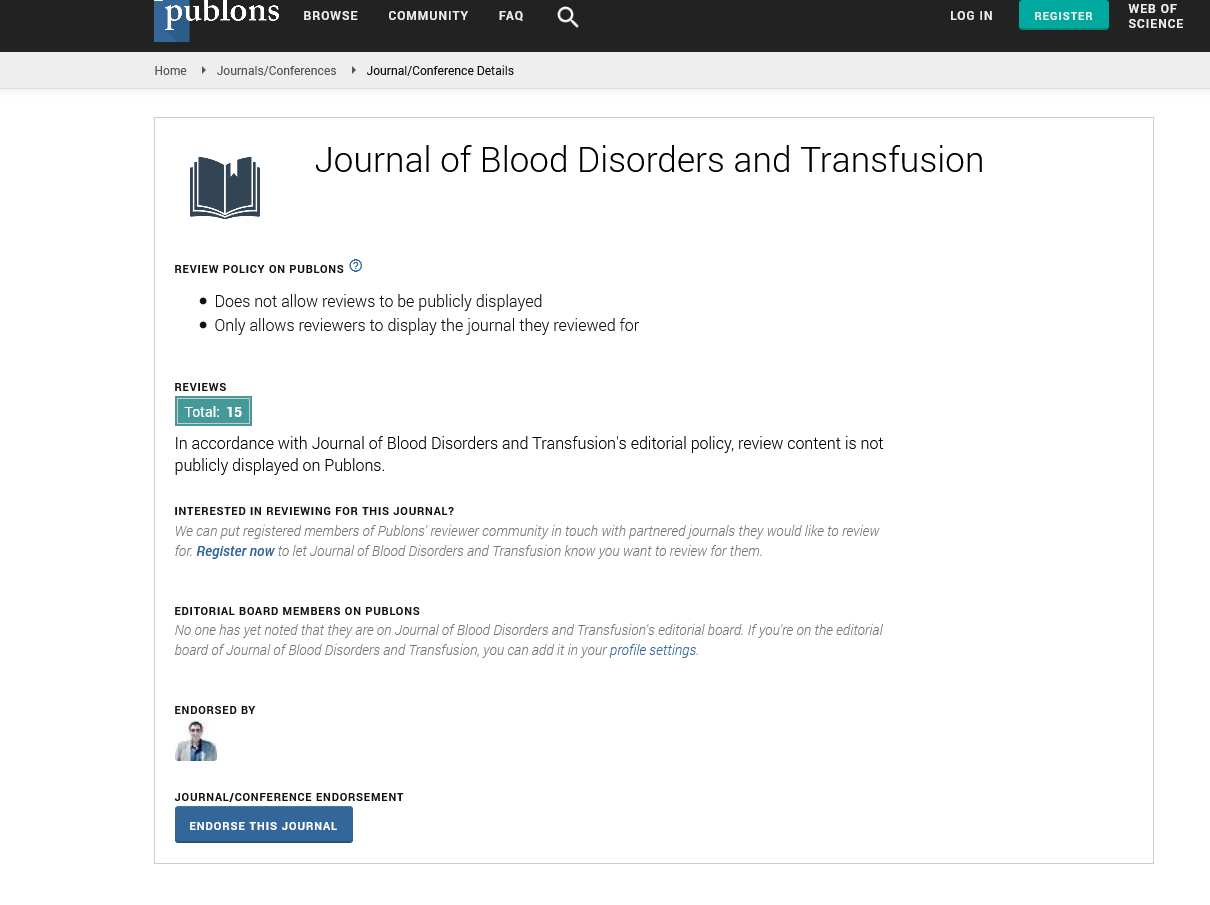Indexed In
- Open J Gate
- Genamics JournalSeek
- JournalTOCs
- Ulrich's Periodicals Directory
- RefSeek
- Hamdard University
- EBSCO A-Z
- OCLC- WorldCat
- Proquest Summons
- Publons
- Geneva Foundation for Medical Education and Research
- Euro Pub
- Google Scholar
Useful Links
Share This Page
Journal Flyer

Open Access Journals
- Agri and Aquaculture
- Biochemistry
- Bioinformatics & Systems Biology
- Business & Management
- Chemistry
- Clinical Sciences
- Engineering
- Food & Nutrition
- General Science
- Genetics & Molecular Biology
- Immunology & Microbiology
- Medical Sciences
- Neuroscience & Psychology
- Nursing & Health Care
- Pharmaceutical Sciences
Role of macrophages in Hematopoiesis and disease
2nd International Conference on Hematology & Blood Disorders
September 29-October 01, 2014 DoubleTree by Hilton Baltimore-BWI Airport, USA
Michael A. Trush
Scientific Tracks Abstracts: J Blood Disorders Transf
Abstract:
Polymorphonuclear leukocytes (PMNs), monocytes and tissue macrophages are important cells in the innate immune response to microorganisms and parasites. In addition, macrophages play a critical role in normal hematopoiesis. They have also been implicated as mediators of a number of chronic disease processes, such as atherosclerosis .Polymorhonuclear and mononuclear leukocytes are derived from the same myeloid progenitor cell in the bone marrow. One of the distinguishing biochemical characteristics of PMNs and macrophages is their ability to synthesize and release ROS .One of the primary cellular sources of ROS in these cell types is a plasma membrane NADPH oxidase. While myeloperoxidase (MPO) is found in myeloid progenitor cells, and in differentiated PMNs and monocytes it is not found in macrophages. Another biochemical and metabolic characteristic which distinguishes macrophages from both PMNs and monocytes is their utilization of mitochondrial respiration for the generation of cellular energy .We will present data to demonstrate that mitochondrial-derived ROS is important in initiating the differentiation of macrophages and in the signaling of IL-1 beta by differentiated macrophages . In addition, data will be presented that this ROS is produced via a PKC-mediated signal. Finally, we will demonstrate that mitochondrial ?derived superoxide can exit the intact cell and facilitate lipid peroxidation and peroxynitrite generation extracellularly. These findings will be discussed with regard to the role of macrophages in hematopoiesis and various disease states. Polymorphonuclear leukocytes (PMNs), monocytes and tissue macrophages are important cells in the innate immune response to microorganisms and parasites. In addition, macrophages play a critical role in normal hematopoiesis. They have also been implicated as mediators of a number of chronic disease processes, such as atherosclerosis .Polymorhonuclear and mononuclear leukocytes are derived from the same myeloid progenitor cell in the bone marrow. One of the distinguishing biochemical characteristics of PMNs and macrophages is their ability to synthesize and release ROS .One of the primary cellular sources of ROS in these cell types is a plasma membrane NADPH oxidase. While myeloperoxidase (MPO) is found in myeloid progenitor cells, and in differentiated PMNs and monocytes it is not found in macrophages. Another biochemical and metabolic characteristic which distinguishes macrophages from both PMNs and monocytes is their utilization of mitochondrial respiration for the generation of cellular energy .We will present data to demonstrate that mitochondrial-derived ROS is important in initiating the differentiation of macrophages and in the signaling of IL-1 beta by differentiated macrophages . In addition, data will be presented that this ROS is produced via a PKC- mediated signal. Finally, we will demonstrate that mitochondrial ?derived superoxide can exit the intact cell and facilitate lipid peroxidation and peroxynitrite generation extracellularly. These findings will be discussed with regard to the role of macrophages in hematopoiesis and various disease states.
Biography :
Michael A. Trush obtained his PhD in pharmacology and toxicology from West Virginia University School of Medicine and completed postdoctoral training at the National Cancer Institute . His research has focused on the generation of reactive oxygen by myeloid- derived cells and drugs and environmental agents. His laboratory pioneered the use of lucigenin to measure intramitochondrial superoxide. He is currently Professor of Environmental Health Sciences in the Molecular Mechanisms, Toxicology and Physiology Tract at the Johns Hopkins Bloomberg School of Public Health. Dr. Trush has published over 150 research articles and book chapters.

